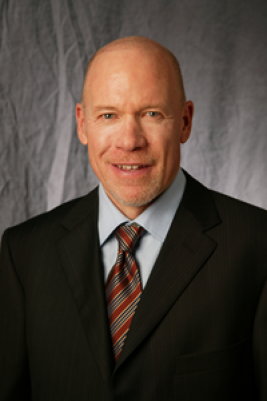

Last Friday, the picturesque Bacara Ritz-Carlton in Santa Barbara played host to an insightful and forward-looking presentation by Mona Miyasato, the County Executive Officer of Santa Barbara County, a Q&A with Steve Lavagnino, 5th District Supervisor Chair, and Peter Rupert, the Director of the UC Santa Barbara Economic Forecast Project. Mona delivered an exciting and comprehensive overview of the county's current status, challenges, and future plans. Read more for our key takeaways and insights from the afternoon's presentations.
1. Balanced Budget and Fiscal Prudence
Mona kicked off her presentation by highlighting the county's balanced budget for the 2024-25 fiscal year. Despite facing inflation and various economic and social challenges, the county has managed to focus on core operations while advancing its goals. The budget emphasizes prudence and progress, ensuring that essential services continue to be delivered effectively.
2. Addressing Homelessness
A significant portion of the budget, $35 million, is allocated to reducing homelessness, particularly in Santa Maria and the surrounding valley. This funding will support the creation of 174 units and enhance social safety net programs and health services. Mona emphasized the importance of these initiatives in providing stability and support to the county's most vulnerable residents.
3. Economic and Property Value Trends
Mona provided an overview of the county's economic landscape, noting that healthcare, social assistance, education, retail, and construction remain the largest industries. She also highlighted the resilience of property values in Santa Barbara County, which have continued to rise even during economic downturns. This stability is crucial for the county's revenue, much of which comes from property taxes.
4. Housing Development Goals
The state mandates local governments to plan for existing and projected housing needs. Santa Barbara County faces the monumental task of planning to build over 24,000 units in the next eight years, with 14,000 of these in the South County. Mona acknowledged the challenges but also praised the collaborative efforts of the Chamber, businesses, workforce, government, and developers in working towards this goal.
5. Public Assistance and Poverty Rates
While the median income in the county is comparable to the state average, alternative measures like the California Poverty Measure reveal a different story. Santa Barbara has the second-highest poverty rate in the state, highlighting the need for continued support and expansion of public assistance programs.
6. Infrastructure and Environmental Initiatives
The county is investing in infrastructure upgrades and energy-efficient projects. The 2030 action plan, set to be finalized this summer, aims to increase the county's renewable energy profile. Significant projects include the Santa Barbara Courthouse roof replacement and structural improvements at the Veterans Office.
7. Challenges Ahead
Mona outlined several challenges the county faces, including an economic slowdown, high mortgage rates, and leveling off of cannabis tax revenue. Additionally, the state's $46.8 billion deficit poses potential risks to local programs. Legislative changes and the increasing frequency of natural disasters further complicate the county's financial landscape.
8. Community and Government Collaboration
Mona concluded her speech by emphasizing the importance of community and government collaboration. She shared a success story of a new permanent supportive housing project in Goleta, which was a joint effort between various local entities. This project exemplifies the positive impact of working together to address the county's needs.
In summary, Mona Miyasato's 2024 State of the County address was a thorough and optimistic overview of Santa Barbara County's current state and future plans. Her emphasis on fiscal prudence, addressing homelessness, economic stability, housing development, and community collaboration provides a clear roadmap for the county's continued progress and prosperity.


Steve Lavagnino, the 5th District Supervisor Chair, began his presentation with a light-hearted comment about his aspirations and the challenges of his role. He highlighted the diverse political spectrum within the county's Board of Supervisors, mentioning the ideological differences between members like Peter Adam and Janet Wolf. Despite these differences, the board unanimously agreed on the appointment of a highly sought-after CEO, emphasizing the importance of strong leadership.
Lavagnino also touched on the significant retirements of the county's department heads, viewing it as an opportunity for fresh ideas and innovative solutions. He expressed his admiration for outgoing members and the dedication required for public service roles. Lavagnino shared his optimism about new members joining the board, particularly highlighting Roy, an immigrant and small business owner who brings a practical perspective to the table. He emphasized the importance of balancing public safety and regulations with allowing businesses the freedom to thrive.
Peter Rupert, the Director of the UC Santa Barbara Economic Forecast Project, provided an insightful analysis of the economic landscape. He discussed the growing demand for healthcare occupations due to increasing health issues. Rupert addressed the controversial topic of rent control, citing examples from Argentina, where rent control led to a significant reduction in available rental properties and increased vacancy rates. He argued that removing rent control resulted in a substantial increase in housing supply.
Rupert emphasized the need for more housing and the importance of removing barriers to construction, such as rent control and excessive regulations.

He highlighted the economic strength of California, despite some lagging indicators like unemployment. Rupert also mentioned the impact of the global financial crisis on Santa Barbara County's pension funds and the subsequent reforms that have made the system more sustainable.
In conclusion, Rupert stressed the importance of practical solutions and collaboration between counties to foster economic development, particularly in high-tech industries. He advocated for reducing regulatory burdens to support business growth and sustainability.
Overall, the 2024 Santa Barbara State of the County Address at Bacara Ritz-Carlton provided valuable insights, from innovative leadership to sustainable development in the region. The discussions highlighted the profound impact these initiatives will have on our local community and the importance of collaboration. Whether you're a business owner, community leader, or resident, these insights are crucial for understanding the path forward.
Previous: 2024 WOW Award Winners Next: Innovations in Housing Part 2